In the Drift: Issue 29, Fall 2017
In this issue
FPOM
FWS Spotlight
Survey on Global Freshwaters
New Book on Intermittent Rivers
Trout Unlimited Collaboration
European Freshwater Sciences Symposium
Annual SFS Meeting Recap
Dear Society for Freshwater Science,
Fall is upon us. It is a great time to enjoy cooler temperatures, autumn foliage and to start thinking about the Detroit 2018 meeting (May 20-24). We encourage you to submit proposals for special sessions by October 16th. With David Walters and Donna Kashian organizing the meeting, how could this not be another terrific "family reunion?"
We have a new president, Colden Baxter, who looks as cool sitting in a rushing river (see here) as he does singing karaoke at the 2017 Raleigh meeting (see below). But seriously, he is one of the most accomplished members of our society. Colden will no doubt continue taking us to the next level.
This is a new voice behind the newsletter. Former editor Deb Finn is on her way to tenure at Missouri State University. If you are familiar with Deb's work in headwater and alpine streams, you will be as curious as I am to see what cool stuff comes from her lab. I am excited to communicate our society's news to you all with this and future newsletters. Remember, In the Drift is open to any and all contributions from members, especially students! Feel free to email me your ideas.
Enjoy your fall issue,
Ross Vander Vorste, lead-editor
VanderVorste.Ross@gmail.com
FPOM
Short SFS notes and quick links collected from "the drift"
- SFS President Colden Baxter enlightens us with his President's Environment address
- Andreas Leidolf to serve as new SFS executive director
- SFS signs two important letters to US EPA regarding Clean Water Rule
- Arial Shogren discusses modeling eDNA movement in streams for Making Waves ep. 25
- 2018 SFS Annual Meeting website is up and you can tweet about it #2018SFS
- Proposals for Special Sessions at the 2018 Detroit meeting are due October 16, 2017
- SFS logo contest ended with 54 logo submissions from 29 individuals; selection is underway

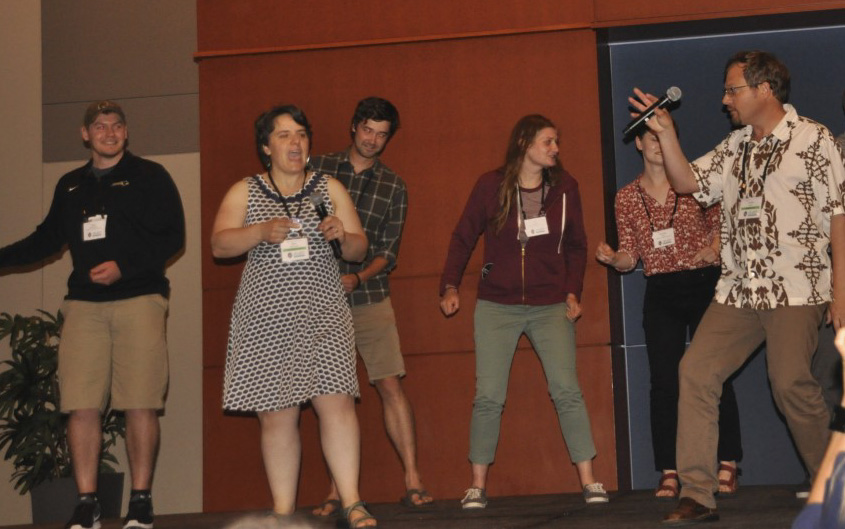
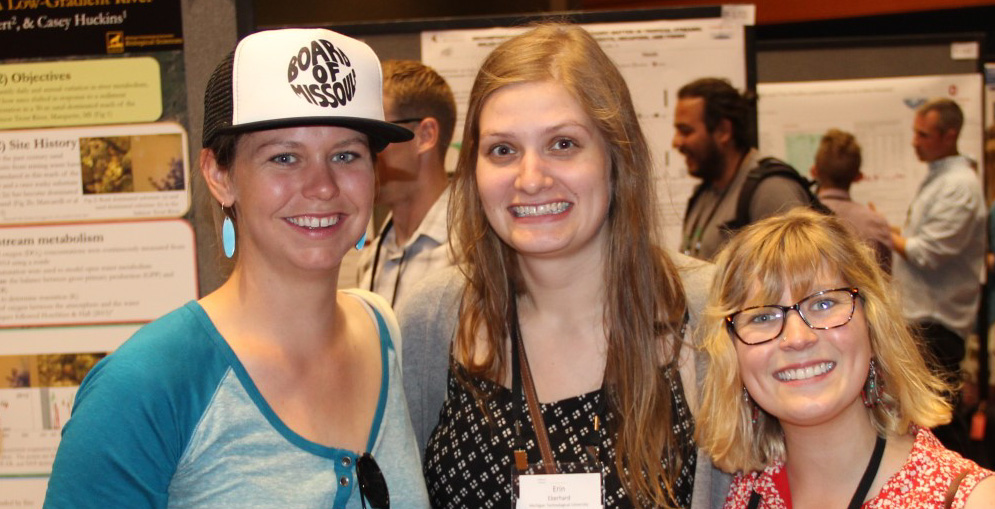
 Photos courtesy of Mike Swift and Mark Wetzel
Photos courtesy of Mike Swift and Mark Wetzel
Freshwater Science Article Spotlight
Flow reversals as a driver of ecosystem transition in Florida's springs
Robert T. Hensley and Matthew J. Cohen
School of Forest Resources and Conservation, University of Florida, Gainesville, Florida 32511 USA
By Ross Vander Vorste
Florida's landscape is dotted with the most springs of anywhere in the US, bubbling out millions of gallons of fresh water each day at a remarkable 20°-23°C year-round. These springs are home to tremendous wildlife, including alligators and manatees, and attract millions of tourists each year, making them of great ecological and economic importance.
However, a new challenge has emerged for freshwater scientists and managers that study and protect Florida's springs in the form of filamentous algae. Once thought to be among the most stable of freshwater ecosystems, the benthos of many springs has alarmingly been transitioning from aquatic macrophytes, perfect habitat and food resources for spring fauna, to one covered with dense filamentous algal mats, poor habitat, food. This is a disappointment for Florida's tourists as well. Despite decades of research and data collection aimed at understanding what controls the stability of Florida spring ecosystems, it was time to throw out old assumptions and re-evaluate potential environmental drivers.


Florida's breathtaking springs have enormous ecological and economic importance. Ginnie Spring – photos by Jennifer Adler (click for more)
Robert "Bobby" Hensley, a postdoc at the University of Florida, and his advisor Matthew Cohen's newest article in Freshwater Science broke free from past assumptions that long-term press-type disturbances such as NO3- enrichment are the primary cause of filamentous algal blooms in north Florida springs. Instead, Hensley and Cohen focused on the potential effects of "flow-reversals", a shorter-term pulse-type disturbance, as dominant drivers in many of these spring ecosystems. Flow-reversals are a phenomenon following significant rainfall when acidic floodwaters (pH ≈ 4) rich in dissolved organic C (DOC) flow backwards into springs and their connected groundwater aquifers. Hensley and Cohen showed that during periods of flow-reversal, light penetration is greatly diminished and dissolved O2 (DO) is reduced creating conditions that inhibit grazers and strongly favor algal growth. Furthermore, they found that the frequency and duration of flow-reversal events are increasing as a likely response to increases in water demand and regional precipitation cycles.

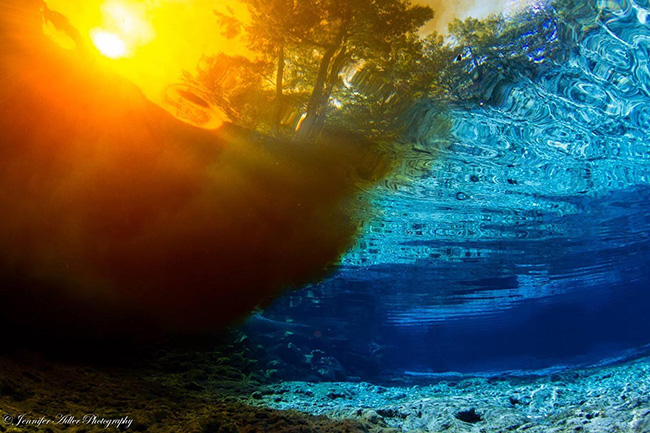
Following significant rainfall events, "flow-reversals" cause tannin-rich water to flow backwards into springs and ground water aquifers, reducing light availability and dissolved oxygen. Ginnie Spring – Jennifer Adler
I asked Bobby on Skype®, what kind of freakishly complex statistical analysis they used to come up with their important conclusions? He smiled and said – "that was the beauty of it" – the method was rather simple once they started investigating these flow-reversals. Increases in frequency and duration of reversal events were quite obvious. They relied entirely on publicly available data from the US Geological Survey and regional water management districts to make their discovery. So, disappointingly, there was no heroic field work involving snorkeling deep into springs during flow-reversal events to collect DO.

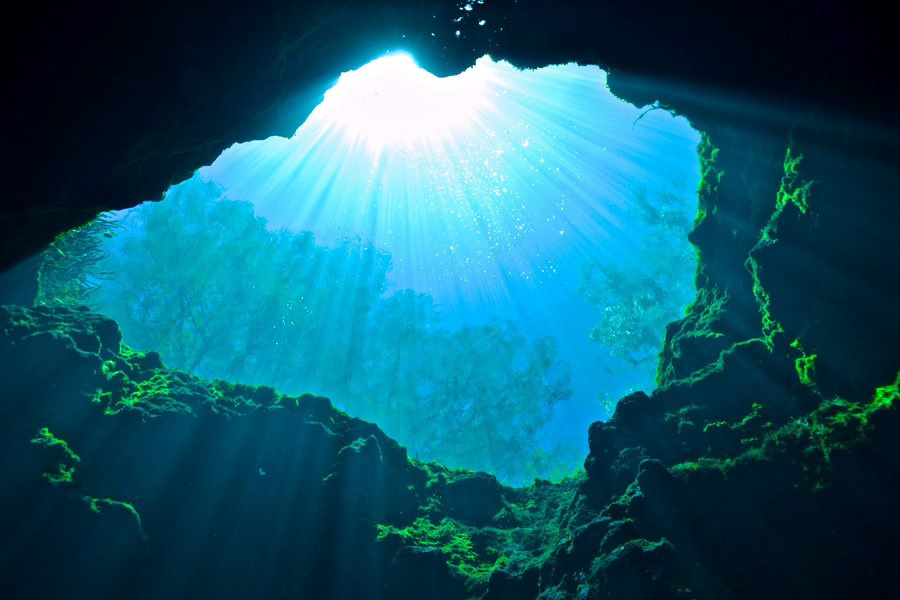
The future need for freshwater scientists and managers of Florida's iconic springs is bright. Ginnie Spring – Jennifer Adler
Bobby and I also discussed the complex management implications of their results. With Florida's ever-growing population and demand on regional aquifers for water, decreases in aquifer elevation may make flow-reversals more easily triggered by altering the hydraulic gradient between surface and groundwater. Therefore, it will be a delicate balance between protecting Florida's springs from algal blooms and providing water for drinking and agriculture. In the article, Hensley and Cohen give several management considerations needed to improve the predictability and sensitivity of Florida's iconic spring eco-systems to future filamentous algal blooms.
Do you have a future article spotlight suggestion?
Email it to VanderVorste.Ross@gmail.com
Quick, Easy Survey to Help a Global Freshwater Initiative in Freshwater Science
The Leibniz-Institute of Freshwater Ecology and Inland Fisheries (IGB), IUCN, and the newly established Freshwater Biodiversity Observation Network (Freshwater BON in GEO BON) feel that a global initiative is now needed to strengthen freshwater science, outreach, education, policy, and conservation efforts.
We have created a 10-minute survey to help identify and prioritize efforts of the global community working with, and interested in, freshwater biodiversity. We particularly encourage the participation of practitioners in conservation and education as well as people involved with the making and implementing of freshwater-relevant policies.
You can find the survey in six different languages (EN, FR, DE, ES, CN, RU) at
www.bit.ly/freshwaterlife.
Thank you very much in advance,
Sonja Jähnig, Michael T. Monaghan, and Vanessa Bremerich Leibniz-Institute of Freshwater Ecology and Inland Fisheries (IGB) Berlin, Germany

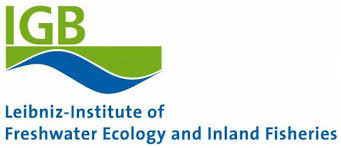
SFS members publish new book on intermittent rivers
Thibault Datry (IRSTEA, France), Nuria Bonada (U of Barcelona, Catalonia, Spain) and Andrew Boulton (University of New England, Australia) have just published a book on intermittent rivers and ephemeral streams (IRES). The book offers twenty-one chapters that dive deep into the physical, chemical and ecological processes occurring in IRES and discuss threats and management considerations. Many of these chapters were conceived with the help of SFS members. This book is bound to interest the masses because of its consideration of IRES across multiple continents, climates, flow regimes, and landuses.
This 622-page paperback can be purchased through Elsevier (click for info) for $84 USD with promo-code "EARTH317".

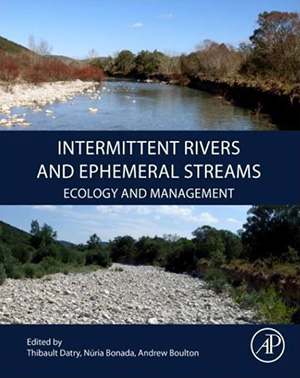
Intermittent Rivers and Ephemeral Streams – 1st Ed.
Society for Freshwater Science and Trout Unlimited Collaboration
By Dave Penrose
It's been obvious to me for a long time that our society and Trout Unlimited (TU) have lots in common. One very obvious thing is the passion for preserving/restoring habitat for native trout species and cold water streams and both groups spend a great deal of time teaching our young about the value of rivers. I would wager that many of us have given insect ecology presentations to TU chapters and at their incredible fishing camps for young people. Trout Unlim-ited has implemented about 1080 restoration projects and over 1600 youth education projects, and recorded 725,000 volunteer hours last year alone.
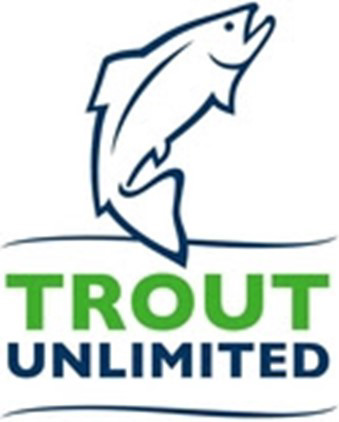

Recently SFS has initiated a couple of projects that have significant TU collaboration. First is an EPT identification program in which we hope to be able to certify individuals in their ability to identify adult insects. The family-level certification will be designed for anglers, guides and naturalists, while the genus-level certification is expected to be of value to researchers in academia, conservation organizations, government agencies and consulting firms. Basic research in freshwater science is increasingly incorporating the adult stage of aquatic insects. In addition to traditional research topics related to life history and taxonomy, emerging areas of applied research include: a) the need for adult identifications for developing DNA barcoding libraries; b) understanding the role of dispersal and oviposition processes for driving insect assemblage responses for restoration and monitoring adults can indicate the potential for recolonization; c) understanding the role of dispersal for structuring communities in human-impacted landscapes (e.g., metacommunity dynamics) for biomonitoring programs; and d) metals and other contaminant transport from aquatic to terrestrial environments by adult aquatic insects; among other areas of research. As the research in these areas continues to grow and is applied to conservation and restoration actions, the need for certified identifications for adult insects is likely to increase. A second collaborative project is the River's Calendar (http://www.riverscalendar.org/) which is a citizen scientist project which aims to track emergence dates for aquatic insects (primarily the EPT groups) which may prove valuable in detecting long-term trends in emergence patterns and other environmental impacts to the phenology of these insects.
Collaboration with TU is important for our Society. We've invited TU members to our conferences before and had TU involvement in our Taxonomy Fairs at the Raleigh and Sacramento SFS conferences. But we can do much more and I'd like to start by encouraging the Board of Directors and select committees to reach out to TU groups during annual conferences. I would also hope that the two Societies could collaborate on many other projects as well. I look forward to collaborating with TU in the future and hope that we can as a Society do so as well.
SFS members attend 2017 Symposium for European Freshwater Sciences
By Dave Penrose

 The 10th SEFS conference was held in Olomouc, Czech Republic July 2-7 and attracted 470 registrants, including an impressive number of students (166). SEFS is the conference of the European Federation for Freshwater Science (www.freshwatersciences.eu; www.freshwatersciences.net and https://twitter.com/EFYR_EFFS). Fifteen European Scientific Societies organize SEFS every two years. The EFFS Board of Representatives (30 people from 16 European countries), is actively involved in the organization and planning of each Symposium.
The 10th SEFS conference was held in Olomouc, Czech Republic July 2-7 and attracted 470 registrants, including an impressive number of students (166). SEFS is the conference of the European Federation for Freshwater Science (www.freshwatersciences.eu; www.freshwatersciences.net and https://twitter.com/EFYR_EFFS). Fifteen European Scientific Societies organize SEFS every two years. The EFFS Board of Representatives (30 people from 16 European countries), is actively involved in the organization and planning of each Symposium.
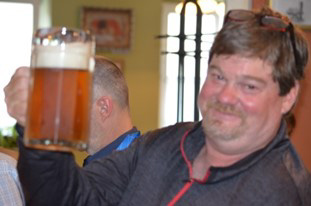
In our opinion, the conference was extremely well organized and the presentations top-notched. Days typically started with plenary presentations including one delivered by Dr. Stephanie Nikola Merbt (Eugenia Marti's former PhD student) who was the winner of best PhD thesis contest, which is organized by the EFFS and gave an incredible talk. The plenary presentations were then followed by individual presentations in one of seven concurrent sessions. The organizers of the conference also allowed for lots of time for individual discussions and opportunities to meet colleagues from Europe. Field trips were conducted on Wednesday which gave all a chance to see some amazing sites and cultural history of the Czech Republic – most ended at either a brewery or winery, fancy that. It's amazing how much we have in common (climate warming, urban streams, hydropower effects, nutrient criteria needs, and high proportion of streams in poor condition as examples) yet there were also many topics unique to European ecosystems and approaches. Taxonomists should check out www.freshwaterecology.info listing tons of information about aquatic taxa in Europe.
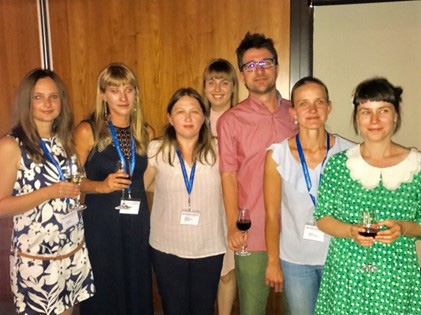
Opportunities for collaboration and broader intellectual engagement with our European colleagues and students were obvious to those from SFS who attended. To this end, we propose the following discussion points: 1) Can SFS encourage European student attendance to our conferences by offering them travel assistance and alternatively can we provide students awards to SFS student members to attend the next SEFS conference in 2019? 2) How can we best support and encourage the formation of a European Chapter of SFS (and also review how we can support other international chapters)? This, in our opinion, would also improve communication.
The EFFS Board organizes conferences every other year and the 2019 conference will be held in Zagreb, Croatia (tentative dates are June 30 - July 5). We're sure it'll be another good meeting and quite affordable for SFS students if flight and registration costs were covered. The attached photo is the planning committee for the Zagreb conference. We had many discussions about the 2019 conference with these folks and hope that a SFS/SEFS partnership will happen.
Many SFS members attended the conference including Janine Rueff, Eric Scholl, Ryan Sponseller, Amy Rosemond, Steve Thomas, Erin Hotchkiss, Keith Gido and others that went unidentified.
2017 SFS Annual Meeting Recap
By Ross Vander Vorste
Photos courtesy of Mike Swift and Mark Wetzel
In case you missed it, the 2017 SFS annual meeting in Raleigh, NC was an overwhelming success. Here are just a few fun summary statistics from this year's meeting:
| 961 | Registered participants |
| 27 | Participating countries |
| 832 | Abstracts submitted |
| 569 | Oral presentations |
| 221 | Poster presentations |
| 12 | INSTARS |
| 99 | Fun Run registrants |
| 15 | Exhibit booths |
| 0 | Beers left at off-site event (I got the last one!) |

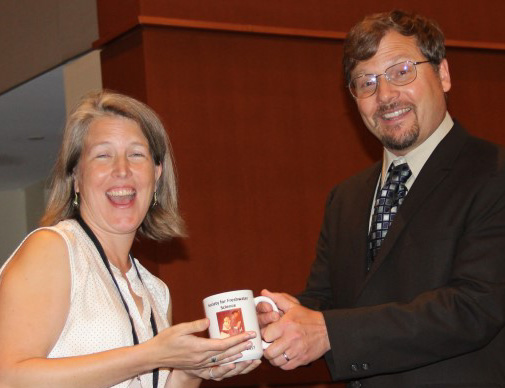
Award winners
2017 Award of Excellence
Walter K. Dodds (more info)
2016 Hynes Award
Erin R. Hotchkiss (more info)
2017 Distinguished Service Award
Susan B. Norton (more info)
2017 Environmental Stewardship Award
David R. Lenat (more info)

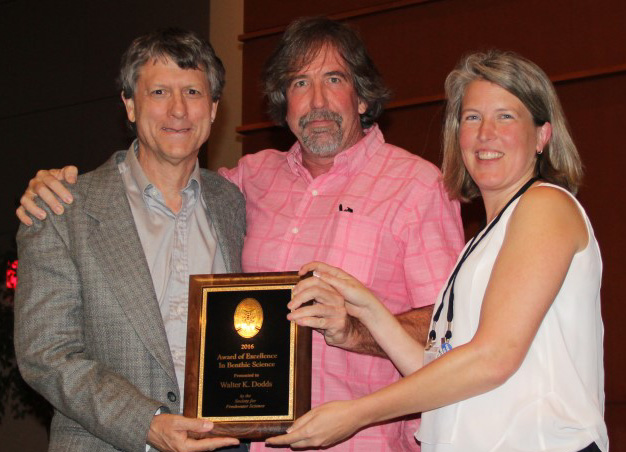
L:R-Walter Dodds, Matt Whiles, Emily Bernhardt
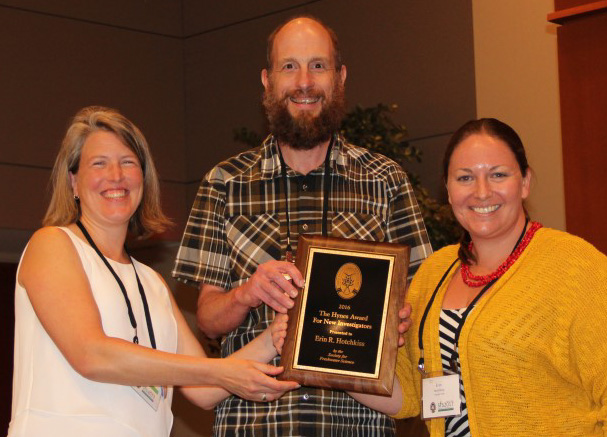

L:R-Emily Bernhardt, Robert Hall, Erin Hotchkiss
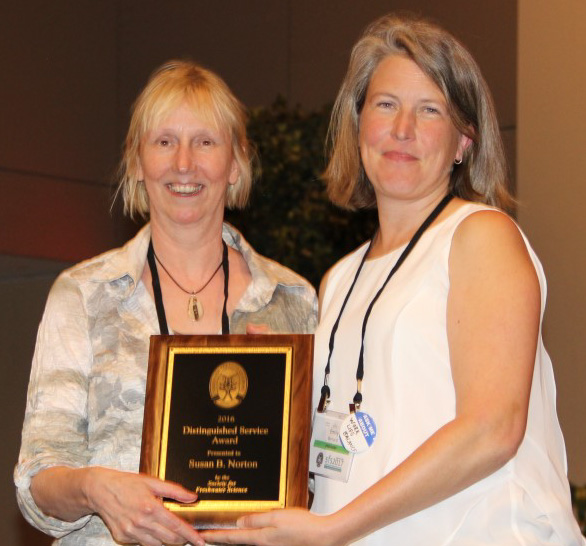

L:R-Susan Norton, Emily Bernhardt
NC Museum of Natural Sciences Off-Site Event

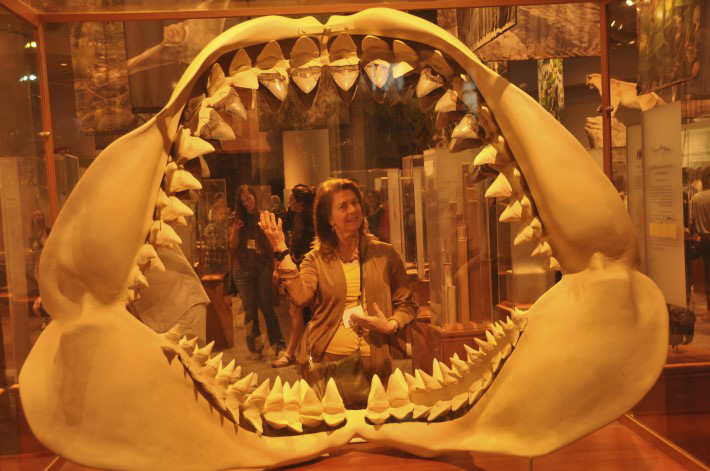
Kim Haag on the bottom of the food chain
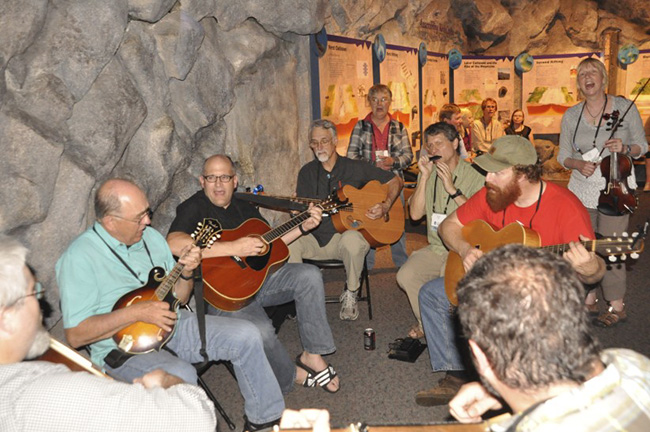

Fred Benfield pickin' with other SFS musicians
Student Award Winners (299 presentations evaluated)
Best oral presentation in basic research.
Andrew Sanders North Carolina State University, Raleigh, North Carolina
HOST DIET STOICHIOMETRY INFLUENCES TRANSMISSION DYNAMICS IN WHIRLING DISEASE
Runner up oral presentation in basic research.
Kelley Fritz Southern Illinois University, De Soto, Illinois
SUBSIDIES OF ESSENTIAL NUTRIENTS FROM AQUATIC TO TERRESTRIAL ENVIRONMENTS VIA AMPHIBIAN EMERGENCE
Best oral presentation in applied research.
Alex Webster University of California, Davis, California
DENITRIFICATION POTENTIAL IN A DYNAMIC ENVI RONMENT: INFLUENCES OF FLOW VARIATION, VEGETATION, AND GEOMORPHOLOGY IN WATERWAYS AND RIPARIAN ZONES OF AN IRRIGATED AGRICULTURAL LANDSCAPE
Runner up oral presentation in applied research.
Brittany Hanrahan University of Notre Dame, Notre Dame, Indiana
COMPARING DENITRIFICATION RATES BETWEEN RESTORED AND NATURALIZED FLOODPLAINS IN AGRICULTURAL DITCHES
Best presentation emphasizing methodology.
Anna Boegehold Wayne State University, Detroit, Michigan
CYANOBACTERIA REDUCE QUAGGA MUSSEL (DREISSENA ROSTRIFORMIS BUGENSIS) REPRODUCTION AND VELIGER SURVIVAL
Best poster presentation in basic research.
Andrea Fitzgibbon Kent State University, Kent, Ohio
BIOFILM-SEDIMENT INTERACTIONS: MICRON-SCALE SPATIAL AND DIEL VARIATION IN OXYGEN
Best poster presentation in applied research.
Madeline S. Genco Clemson University, Clemson, South Carolina
LEARNING TO SEE, SEEING TO LEARN
Best Oral or Poster Presentation by an Undergraduate Student
Patrick Carroll University of San Diego, San Diego, California
DROUGHT INDUCED DISPERSAL IN DIVING BEETLES IN THE WESTERN UNITED STATES


SFS student endowment awards ceremony


SFS INSTAR program participants and mentors

